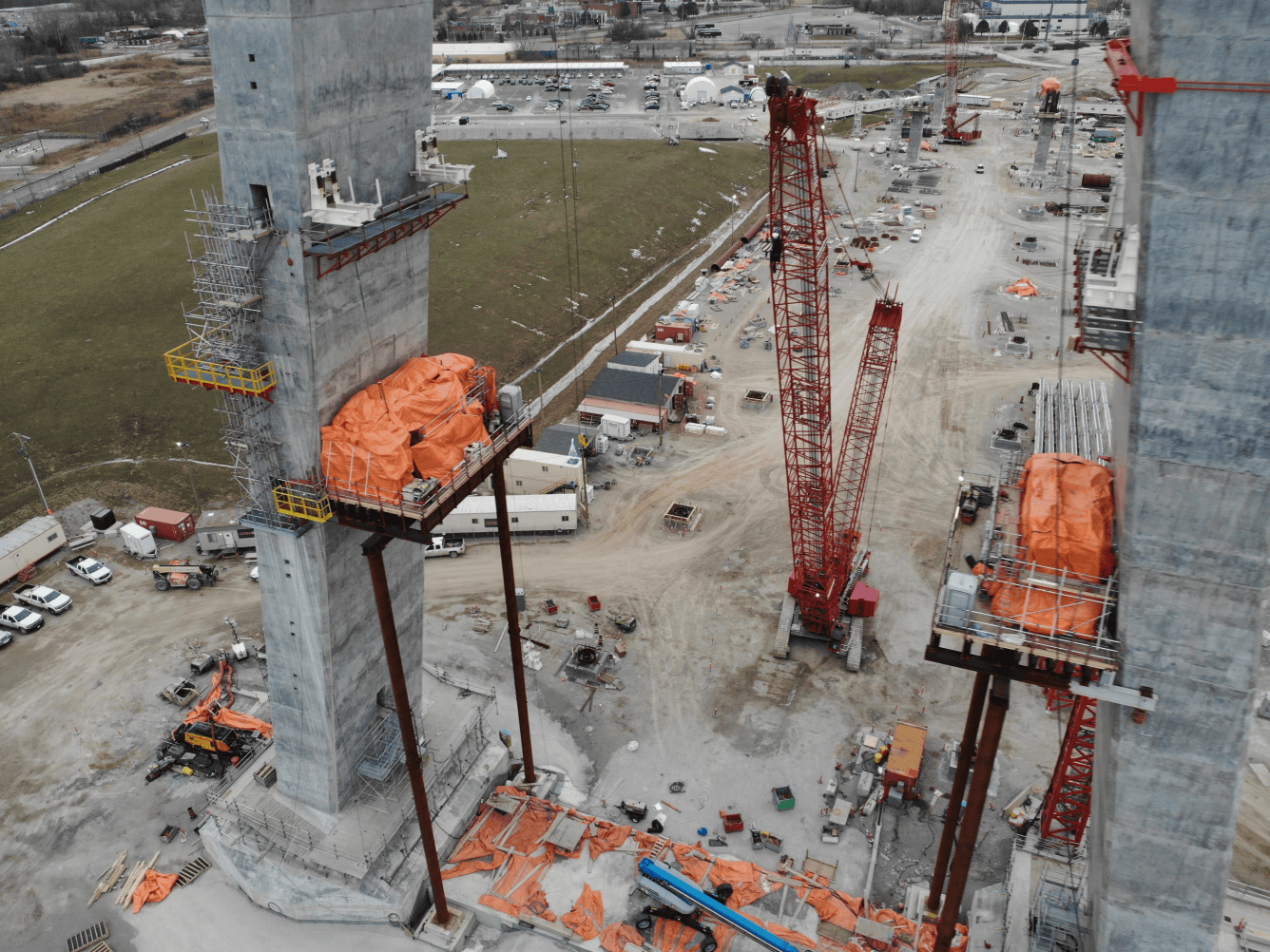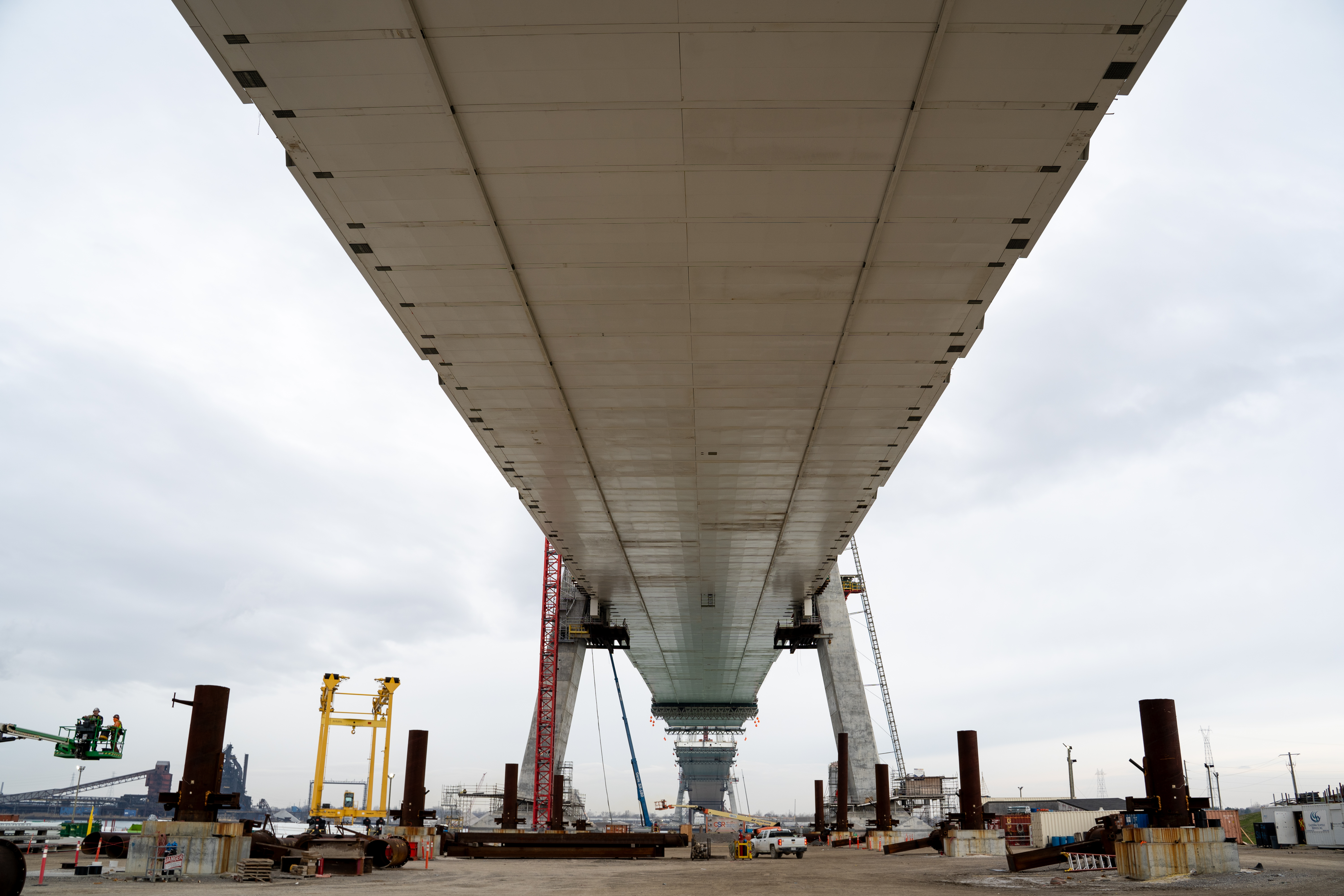
As work continues on the final phase of construction of the lower pylons of the Gordie Howe International Bridge, crews have been busy preparing for the main and side spans with the installation of corbels between each tower leg in both Canada and the United States.
Corbels play an important role in construction of the bridge. Once installed, they support the bridge deck near the tower legs and provide a place to support the vertical, transverse and longitudinal bearings, which act to transfer weight from the bridge deck to the tower.
Made of reinforced concrete that was cast in-place, each corbel is built with 55 tonnes/121,254 pounds of stainless-steel rebar, 22 millimetres by 46 millimetres post-tensioning bars and 75 cubic metres/98 cubic yards of concrete.
Before the corbels were built, workers completed temporary falsework.
There are two main components to the falsework, both of which were bolted to the tower legs with cast-in anchors. The lower part consisted of vertical support columns made of structural steel sections such as I-beams and hollow structural steel sections. They worked to provide necessary support while the corbels were constructed and installed. They are now removed as the corbels have reached their full concrete strength.
The second component of the falsework, the upper part, is soffit support made up of steel structural beams and a wooden platform. The crews call this “the dancing floor.” The soffit support will remain in place and suspended from the corbels through high tensile steel bars. It will help with the installation of the pier table for bridge deck construction.

